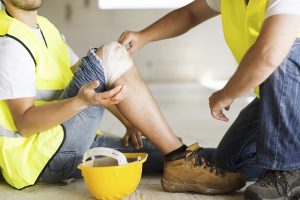For those involved in construction-related jobs, they’ll know one of the most dangerous factors of the job is concrete drilling. Concrete work can be hazardous and potentially life-threatening if not carried out properly. It is essential for those operating heavy duty concrete drills to possess the knowledge and skill needed to not only do a good job but to do the job safely. So, with yours and your colleague’s safety in mind, today we’ll take a look at the proper procedures to adhere to when it comes to concrete drilling.
Start with Safety Equipment
- Protecting your eyes and face: While working on concrete, you need to protect your eyes and face from flying objects and particles. Dust is produced from concrete drilling, so to prevent this make sure to wear safety goggles and face shields.
- Hand protection: Heavy-duty leather or rubber gloves should be worn by workers who would drill concrete. Wrist cuffs and armlets optimize maximum protection.
- Hearing damage protection: Loud noises emanating from concrete drilling may prove harmful for your eardrums. To prevent undue damage, always wear earplugs or earmuffs whenever the equipment is producing a lot of noise. And of course, change regularly to maintain good hygiene.
Step-by-Step Safety
Once you’ve become familiar with the tools and equipment used when concrete drilling it’s time to take the next step:
- When you’ve marked precisely your area to be drilled, drill briefly on the mark, using a low speed. Make a shallow hole in preparation to help guide your drill for the real hole. Place the drill in the pilot hole, keeping it exactly perpendicular to the concrete surface. Start drilling with firm, but not forceful, pressure to push the drill forward. Gradually increase the drill speed and force if necessary.
- To help prevent the inevitable buildup of dust bring the drill back slightly and press it back in again every ten or twenty seconds. This helps pull dust out of the hole. Removing dust improves the strength of concrete anchors. Use a squeeze bulb or can of compressed air to remove concrete dust from the hole, then vacuum it up. Leave your goggles on while doing this to protect from dust and debris.
Construction Safety and GPR Scanning from Concrete Visions
Concrete Visions has over 12 years of experience and expertise in concrete scanning and we know how to detect any problems lurking beneath the surface. We use ground penetrating radar accurately and expertly and are familiar in many other methods that can be used when appropriate like concrete x-ray and electromagnetic conductivity. We are also very familiar with the latest construction safety techniques and train all of our workers to do their work quickly, accurately, and safely. If you would like to learn more about how we can help you, give is a call at (410) 766-2210 or visit us online. For more articles and tips, follow us on Facebook, Twitter, LinkedIn, and Google+.

